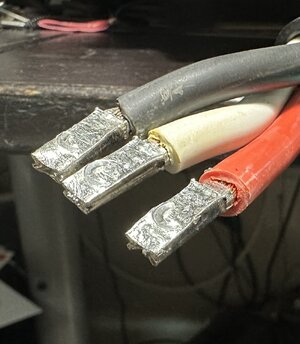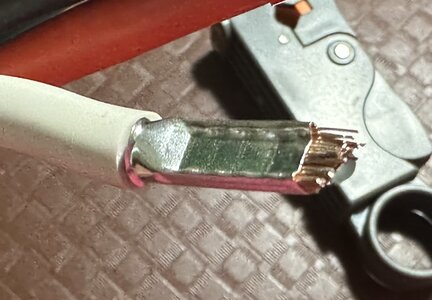Joe Dutchstar
RVF Supporter
- Joined
- Nov 3, 2019
- Messages
- 3,646
- Location
- Florida
- RV Year
- 2024
- RV Make
- Newmar
- RV Model
- Dutch Star 4311
- RV Length
- 43
- Chassis
- Spartan
- Engine
- Cummins
- TOW/TOAD
- 2018 Ford Flex
- Fulltimer
- No
When the wire for the Hughes Bulldog surge protector was swapped note the ferrules and tinned ends of OEM wire.
Discussed this with a Hughes engineer and he indicated that the concern is that the wire remains secure in the fitting.
I’ve attached an image of the OEM wire ends.
Over the next weeks the wire that replaced the OEM wire will be refitted with ferrules something like the second image attached.
Unfortunately when the OEM wire was swapped ferrules and crimp were not available.


Discussed this with a Hughes engineer and he indicated that the concern is that the wire remains secure in the fitting.
I’ve attached an image of the OEM wire ends.
Over the next weeks the wire that replaced the OEM wire will be refitted with ferrules something like the second image attached.
Unfortunately when the OEM wire was swapped ferrules and crimp were not available.













